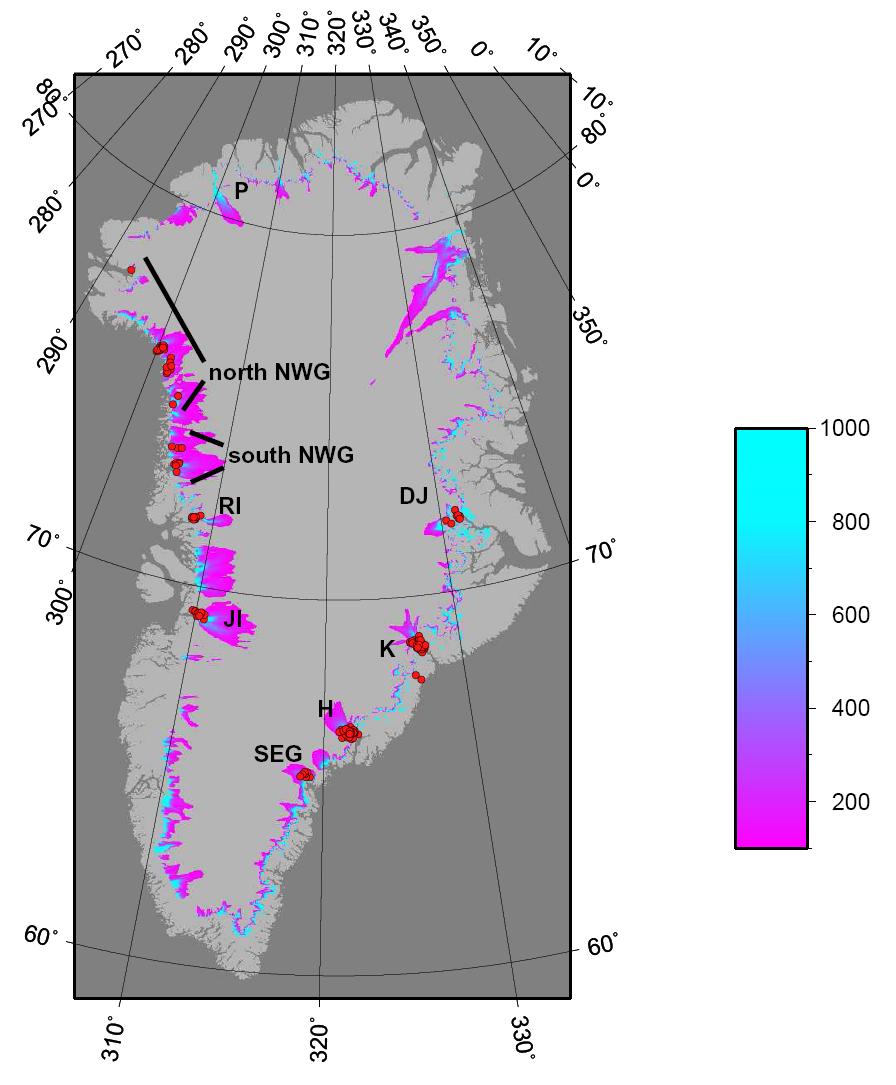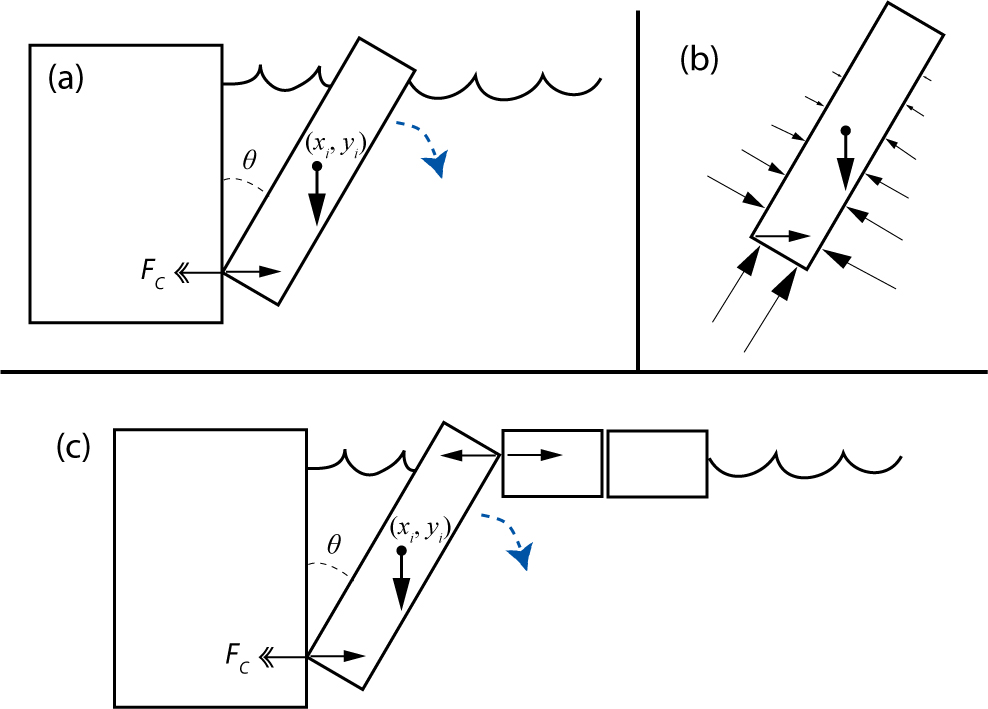Glacial Earthquakes

Glacial earthquakes are earthquakes of (surface-wave) magnitude
~ 5 that occur in glaciated regions (primarily Greenland). They
were first detected in 2003. Since the initial detections, we have
characterized them in much more detail. In particular, we now know that
glacial earthquakes are intimately related to ice motion. They occur only
in regions with very high ice flow speeds (in excess of a few km/year);
the mechanisms are consistent with acceleration of massive chunks of ice
in the downstream direction; and they occur more often during the summer months,
when the most melt is generated.
Plotted at right (red dots) are the locations of the Greenland glacial earthquakes
that occurred between 1993 and 2005. The background colors denote the balance velocity
field (from Bamber et al. 2001) in m/yr. Note that the events occur only in regions
where the ice speed is greater than 1 km/yr.
Update: We now think we understand the physical process relatively well. Very large icebergs
likely calve off into the fjord and push against the glacier face, creating a large force
that is transmitted to the solid Earth. See plots below for schematics of this, and see
publications section for more details.


